Getting the most out of your fresh fruit and vegies
by Anne Finch, Accredited Practising Dietitian for LiveLighter
- May 11, 2020
- Leave a comment
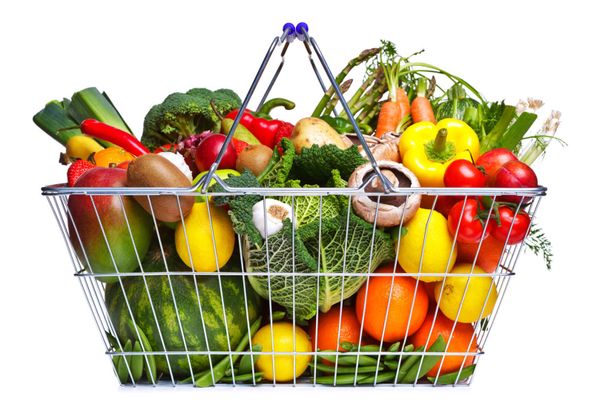
Staying home more means fewer trips to the shops. This means buying more, less often and making it last longer. This is all fine and dandy for tins, and even freezeable foods like meat and dairy – but how do you stretch your fresh produce out so it lasts more than a few days? It’s all about planning, and getting to know your produce…
Choose the freshest fruit and veg
Depending on your location and the time of year, some of your produce could be 10 months old by the time you get it! While there’s no way of knowing when the produce at the supermarket was picked, buying fruit and veg that is grown locally and is in season gives you the best chance of a long shelf life at home. If it’s Australian grown and on special, that’s a good indication that it’s in season. Learn more about seasonality and fruit and veg freshness here.
Choose hardier fruit and veg
When you’re planning your meals, use fruit and veg with a short shelf life (salad greens, fresh herbs, berries, stone fruit, avocados etc.) first. Then these hardier fruits and vegetables (see our handy list below) will have your back – they’ll easily last a couple of weeks if stored right.
|
Vegetables |
Fruits |
|
|
Potato |
Carrot |
Apple |
|
Sweet potato |
Cauliflower |
Pear |
|
Onion |
Turnip |
Orange |
|
Pumpkin |
Kale |
Whole melon |
Store it right
Most fruit and vegetables keep for longer in the fridge. But there are a few exceptions. Here’s some clever hacks to keep them fresh and make sure they’re at their best.
Avocados

Store them on the bench to ripen in their own time. Pop them in a paper bag with a banana to ripen quickly. Store them in the fridge once ripe.
Bananas

Bananas let off a natural gas called ethylene that can make other fruit and veg ripen. Harness this power by putting a banana in a paper bag with avocados you want to speed ripen. Otherwise, store them on the bench top, away from other fruit. Bananas keep longer in the fridge, but it does makes the skin black (they’re still good inside!).
Fresh herbs
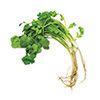
Wrap in a damp paper towel and put in a container in the fridge
Lettuce and salad greens
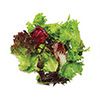
Store in the fridge, with a paper towel in the bag/ container (to absorb moisture which will help stop your greens going slimy).
Mushrooms
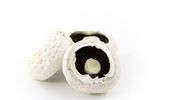
In a paper bag in the fridge.
Onions and garlic

Store them somewhere cool and dark and well ventilated. In a basket in a cool cupboard is perfect. Don’t store in ordinary plastic bags.
Potatoes and sweet potatoes
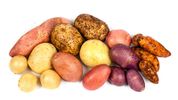
Store them somewhere cool, dark and well ventilated. Don’t store in ordinary plastic bags.
Stone fruit
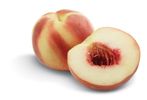
Store on the bench top to ripen, then in the fridge.
Tomatoes

Store on the bench top to ripen, then in the fridge. I like to take them out to warm to room temperature before using – this enhances the flavour.
Want more info? We’ve got a detailed guide to choosing, storing and preparing almost every fruit and veg over here.
Root-to-leaf cooking
Using up every last scrap has never been more important! Here’s some tips for the vegie bits we often throw away.
Broccoli and cauliflower

We usually focus on the florets, but the stalk is also yummy – cooked or raw! It’s a little tougher, so chop it smaller or start cooking it sooner than florets of the same size. If the stalk is tough or bitter, peel the outside layers away with a vegie peeler or small, sharp knife.
Celery leaves
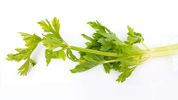
These are crisp and peppery – especially the young pales leaves. Use them in a salad or sandwich or anywhere you’d use rocket or radicchio.
Lemon, limes and oranges
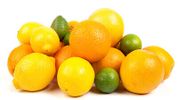
If you’re eating or juicing citrus, zest them first and pop the zest in a ziplock bag in the freezer. The zest is then ready to go in cakes, pastas, salads and more.
Mushrooms
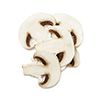
No need to peel or even wash (they get waterlogged easily)! Just wipe gently with a damp cloth. Use the whole mushroom – trim the end if you like, but use the stem the same way you’d use the cap.
Spring onions

Use the whole thing, not just the white part! Slice the green thinly and use raw as a garnish or throw in at the end of cooking for a bit of pep.
Vegies with skins
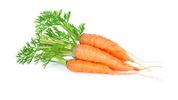
Hate peeling vegies? You can stop! Carrots, potatoe
Vegie scraps
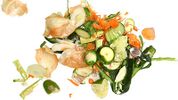
Corn cobs, onion skins, zucchini ends and more! Throw them in a ziplock in the freezer and boil them up at the end of the week to make stock. More instructions on how to do that here.
Keep an eye on things
To get the most out of fruit and veg, you need to eat them before they go off. And to do that you have to know what you have and how long it’ll last. Keeping your fridge organised and your fruit and veg visible will help here. If you see something fading – use it up! Be flexible in your meal plan (and your recipes) to accomplish this. We’ve got more tips for ‘making do’ over here.
Rescue it!
If you miss the boat, and your produce is past it’s peak, try these rescue remedies before they hit the compost, worm farm or bin.
- Overripe bananas are perfect for smoothies and baking. They also freeze well if you’re not ready to deal with them right now.
- Tomatoes that are past their peak for salads or sandwiches are probably still good for a pasta sauce or soup.
- Celery, carrots, asparagus and broccoli can all go a bit soft after a while. As long as they’re not mouldy, try trimming the end and standing them in a glass of cold water. This is a great science experiment with the kids too!
We’d love to hear your tips and tricks to reduce your trips! By staying home we’re all doing our part to limit the spread of coronavirus and keep our community safe.
More tips and tricks to stay healthy at home







